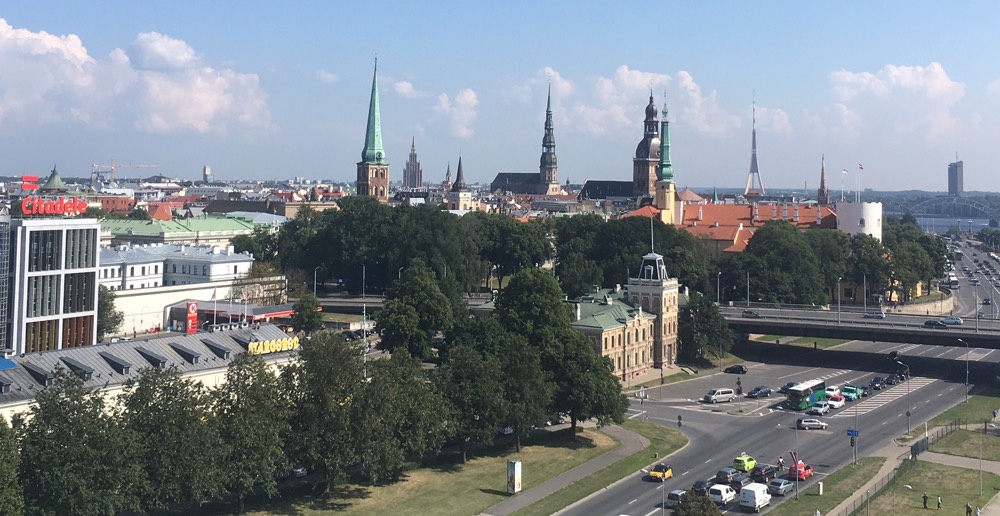
After starting our cruise in Stockholm, a first stop in Helsinki, two days in Saint Petersburg and a day in Tallinn, Riga was the last stop of the Baltic cruise with Royal Caribbean‘s Serenade of the Seas.
Riga is the capital of Latvia. With over 641,000 inhabitants it’s not only the most populated city of Latvia, but also of the three Baltic States – Estonia, Latvia and Lithuania. I didn’t know that. It explains why Riga had a more ‘capital city vibe’ than neighbouring Tallinn.
Big Kristaps
The ship docks close to the city centre, sailing on the Daugava river. On land, you’re greeted by Lielais Kristaps, or ‘Big Christopher’. Big boy Kristaps lived in a log cabin on the right bank of the river.

One night, he heard a child crying on the left bank. He rose and went to fetch the child and took it with him. In the olden days it was okay for a man to take a naked child with him. Swimming back home was difficult but he made it. He put the child in bed in his cabin.
In the morning, the child had disappeared. Instead, there was a chest with gold coins. That money was used to found the city of Riga.
Hansestadt
Riga was a Hanseatic city. The Hansestädte were a commercial and defensive confederation of medieval cities. The Old Germanic word Hansa means convoy and can still be found in the household name Lufthansa.
So you can imagine how picturesque and quaint the old city centre is. While there, there was an installation of United Buddy Bears. You can see me hug the Belgium Bear. Which, honestly didn’t have an inspired livery. Can I design one, please?
NATO
On a side note. We went to see Riga Castle. Outside there are flagpoles with flags of Latvia, the European Union and NATO. That’s a first and certainly not a coincidence. Latvia, together with its neighbours, feels the cold breath of Mother Russia in its neck.

Modern station
I obviously dragged Steve to Riga Central Station. I can’t resist trains. The station is modern, the trains are old. But the livery is nice.
Art Nouveau
Riga is UNESCO World Heritage thanks to the Art Nouveau or Jugendstil houses and buildings. Between 1910 and 1913, between 300 and 500 new buildings were built each year in Riga, most of them in Art Nouveau style and most of them outside the old town.
Going back?
After a long walk covering the medieval town, the station and the Art Nouveau area, we called it a day.
But unlike Tallinn, we felt Riga was more of a real city. We might go back.














19 Comments Add yours